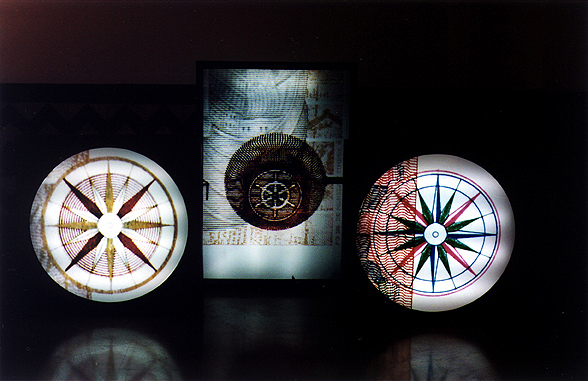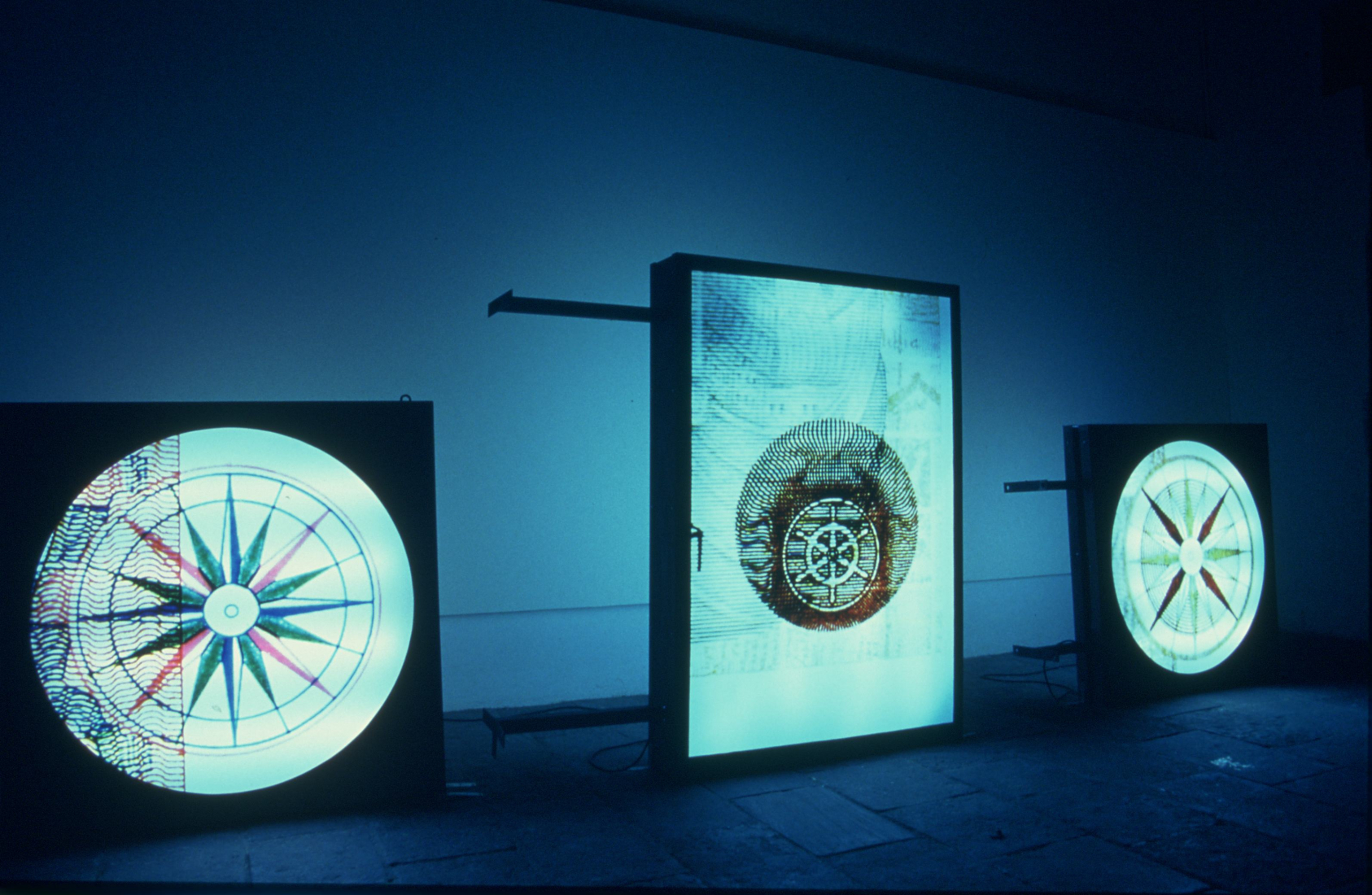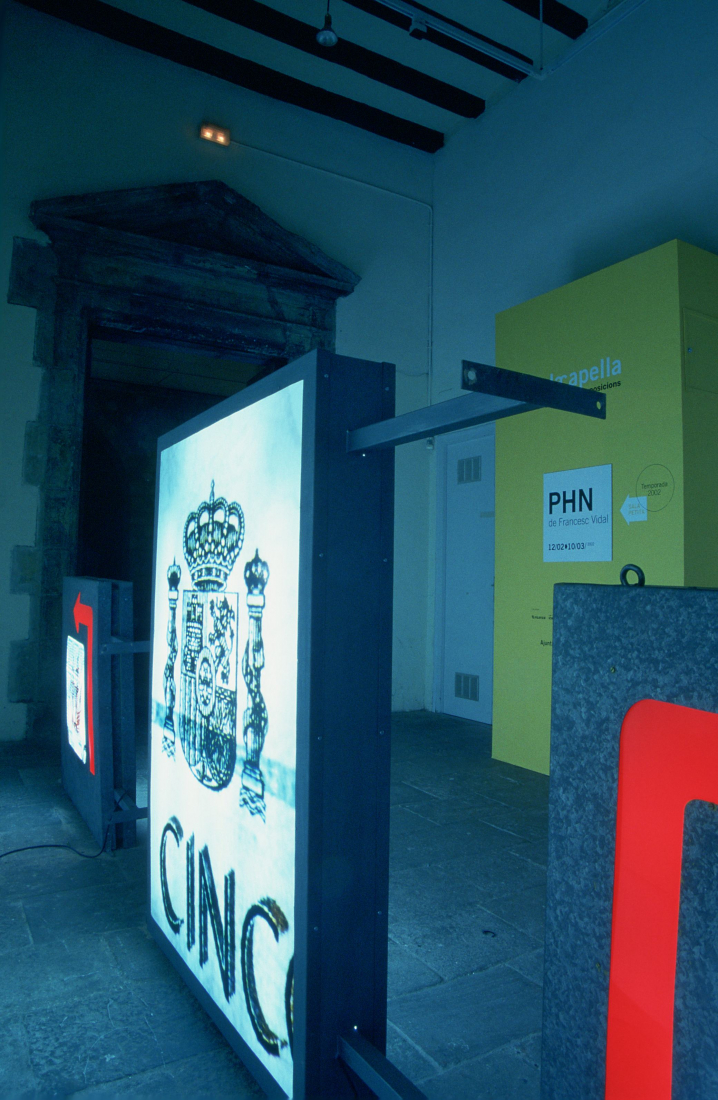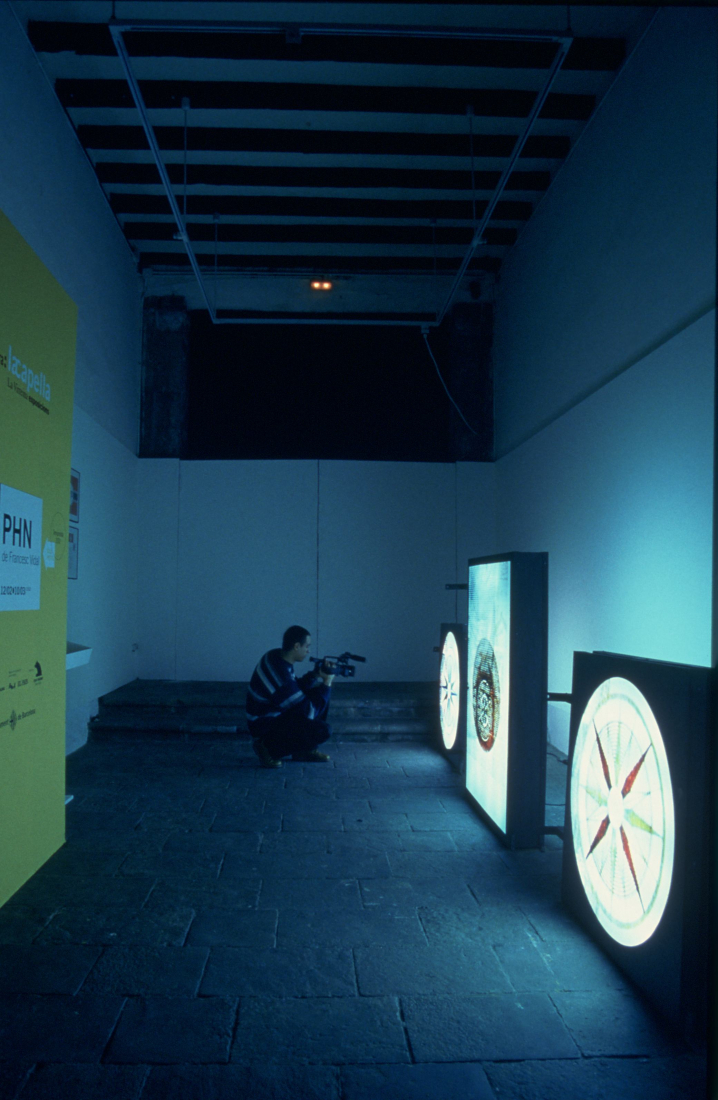P H N
PHN
Francesc Vidal and the Battle of the Ebro
It is possible that the utopia of the last vanguards to bring art closer to life is not only an abstract image if we take the time necessary to discover that all images speak of us.
The first thing that images working as something more than a simple reminder that we have to keep buying anything else that is useless claim is time.
Unlike the time scheduled for the advertising spot, or the urban journey that we do accompanied by the choreography of images that populate the public space, the time of the work of art and its viewer is relative, interactive. Each work and each viewer have theirs, what is necessary to activate the channel of communication that will reveal what the image conceals, unsettling, at the first glance.
PHN was exhibited for the first time last December at the School of Art and Design of Tortosa, a city that has mobilized popularly and democratically in a new Battle of the Ebro against the execution of the National Hydrological Plan.
Francesc Vidal at PHN invites us to discover what lies behind the image of money, in this case the financing of the controversial National Hydrological Plan. For this, he chooses a coin and the dispossession of its mercantile function to expose the symbolic value that the image contains. It enlarges it, illuminates it, envelops it in an aura of unique image and transforms it into an exquisite artistic artifact that needs a small investment of the time of the spectator to show it the symbols of a State that does not hesitate to impose a PHN destined to transform life of a wide territory, in spite of the overwhelming opposition of the majority of its inhabitants. The role of cultural agitator that characterizes the work of Vidal fits perfectly with the social upheaval unleashed by the crisis of the NHP (Plataforma en Defensa del Ebro: www.ebre.net).
It is not the first time that a work by Francesc Vidal plans on the sociopolitical repercussions of the institutional management of public money. The same theme was already evident in the Public Money proposal, selected in the Art Públic Calaf 1999 call, where the institutional funding of contemporary art was questioned with funds from citizens' taxes and their real incidence in the social context. Vidal has also launched a debate aimed at clarifying the cultural policy of the various Catalan institutions and the scope of their budgets in relation to the creation of infrastructures that give authentic relevance the numerous artistic projects, and cultural diffusion, that are developed in the independent field and are, and have always been, the real generators of new proposals.
Francesc Vidal assumes the need for communication as a matter of imperative. That is why he is not satisfied with showing his works in the exhibition halls, the place usually pre-established for art, but he goes through the physical and conceptual spaces frequented by the public, without hesitating to invade the street with his images, such and as he did with the posters of PHN, of unmistakably fascist aesthetics, distributed through the shop windows of the commercial establishments of Tortosa in an attempt to create a controversial situation through such a conflictive topic.
He looks for the public, he addresses him with a language that is familiar to him and talks about issues that affect him in the closest way. The localist character -ultralocalista, he calls it- of most of his works is located in an attempt to erase the abstract category of images, the news, the information that haunts us every day from the media and where everything becomes in a space far from our lives, in a fictional way. A space and a time where it is the others who do everything we never know to what extent it concerns us. That perfectly bounded space where politics is something that politicians do; art, something that artists do, and life (with capital letters) always goes far from home, while we have too much work to focus on.
The element that articulates, a long time ago, the creative trajectory of Francesc Vidal is the attempt to bring the public closer to contemporary art (or perhaps it is the other way around), and has proposed, with his artistic work, to give the battle to the images and media messages using their visual codes and dissemination strategies.
The peculiarity of his proposal is that, using the forms popularized by the media, he tries to articulate them in terms of criticism and with a purpose of collective cultural agitation. That is why his work is always exquisitely aesthetic, and a careful formalism that aims to confront you face to face with spectacular messages on your own ground and jump over the viewer with an unexpected spark of revolt when, suddenly, it shows us all your letters.
Sponsor: Caja Madrid. Obra social
Sponsoring media: El País i Ràdio 4
Colllaborator: Schilling







